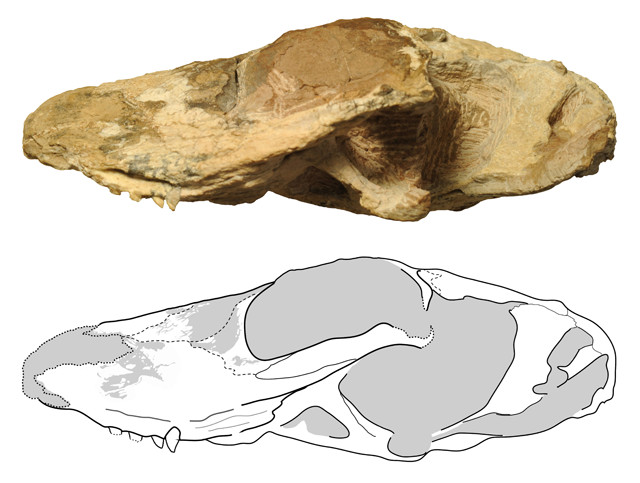
by Mary Caperton Morton Thursday, November 12, 2015

A new species of mammal, nicknamed "Scarface," may be one of few known venomous mammals. Credit: Field Museum.
Venomousness is rare among both living mammals and their extinct relatives, with only a handful of modern mammals, like the platypus and some species of shrews, known to produce venom. But the discovery of a mammal that lived about 255 million years ago in what is now Zambia may be one of the earliest venomous mammals.
The new species was dubbed Ichibengops munyamadziensis. Ichibengops is a combination of the local Bemba word for scar — “ichibenga” — and “ops,” the common Greek suffix for face, leading to the nickname “scarface” for the animal. Roughly the size of a small dog, I. munyamadziensis belonged to the Therocephalia group, which survived the Permian-Triassic extinction, the largest extinction in Earth’s history.
“Discoveries of new species of animals like Ichibengops are particularly exciting because they help us to better understand the group of animals that gave rise to [modern] mammals,” said Kenneth Angielczyk, a paleomammalogist at the Field Museum in Chicago, and an author of the new study in the Journal of Vertebrate Paleontology, in a statement.
A close examination of two partial skulls revealed grooves above the teeth on the upper jaw, which may have been part of a venom delivery system, channeling toxins to the teeth. Venomousness could have served as an effective tool for both defense and obtaining prey.
© 2008-2021. All rights reserved. Any copying, redistribution or retransmission of any of the contents of this service without the expressed written permission of the American Geosciences Institute is expressly prohibited. Click here for all copyright requests.